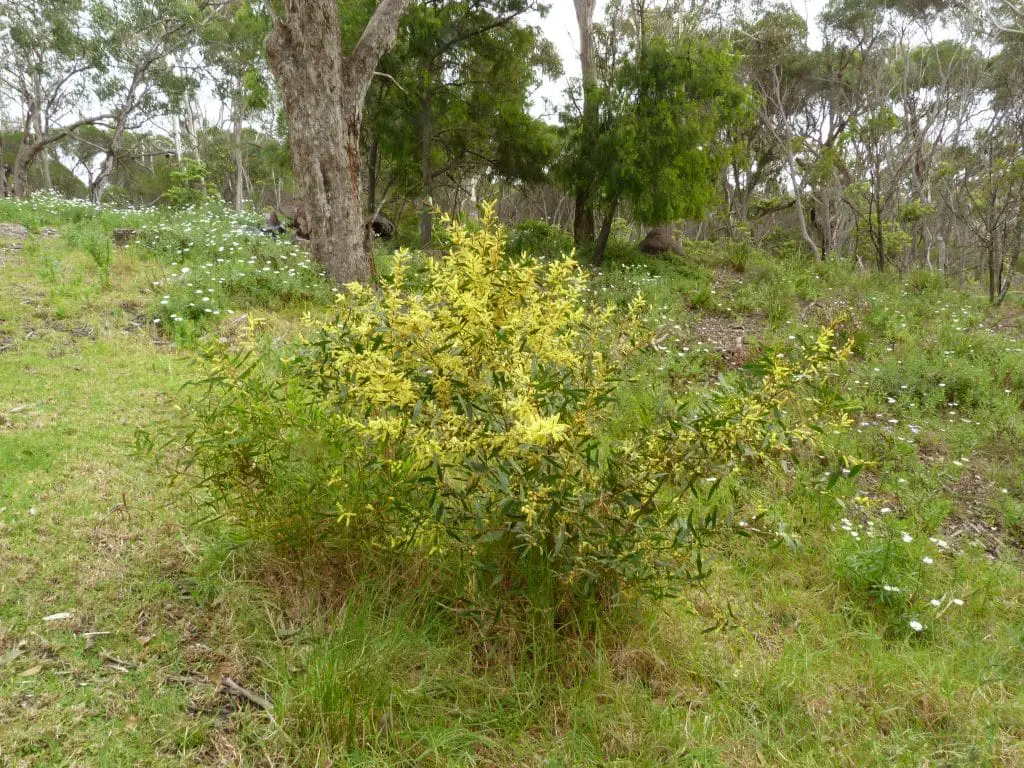The acacia longifolia is an evergreen tree It grows in warm and tropical climates. It is a tree belonging to the acacia genus, and therefore, to the acacieae tribe. Together with the acacia caven or the acacia arabica they belong to the mimosoideae subfamily, which in turn is from the fabaceae family.
He common name for acacia longifolia It’s golden mimosa. This is due to its characteristic intense yellow color of its leaves, or rather, of its flowers. Other names it receives are also acacia trinervis or double aroma. Let’s see a little more about this interesting species of acacia.
Description of acacia longifolia
The acacia longifolia can reach eleven meters in height, although its average is eight meters. It is a fast growing tree. Its green leaves remain that way throughout the year.
This feature is important in most species of acacias, as they rarely turn yellow. So its leaves are evergreen, that is, in a certain way, they do not wither.
In addition, it has three ribs that are longitudinal and also stand out on the plant. Its leaves, on the other hand, have an elliptical shape and are lanceolate. In addition, the flowers are hermaphrodite, and present the perianth with a calyx; the corollas are tubular. It has stamens in great quantity, and as we have already said, its characteristic color is yellow.
In addition, its spikes are dense and axillary of an intense yellow, or golden color. It also presents inflorescence in cylindrical spikes. In fact, the fruits that it bears, or the legumes, are also of the same shape.
As we can see, it is a tree that stands out from many other acacia species by the shape of its leaves, and by the color that defines it; so it’s relatively easy to know. It is also easy to grow and maintain, as we will see later.
Habitat and location
Although it is Australian in origin, acacia longifolia can also be found in other parts of the world with tropical climates. They can also withstand winters, although if these are intense, they may not survive.
In addition, they are not so demanding with respect to the quality of the soil, since they are capable of growing in poor soils, as well as those that are arid. They are also ideal as coastal trees.
For this reason, it is better to grow them in areas with warm climates. In fact, it is also necessary that the place where it is planted or cultivated is in full sun, not in the shade or in cold climates, as it will not survive.
As an ornamental plant, it can be grown in gardens, but it is not necessary to water it so frequently, since it must be remembered that it needs little water to survive. Otherwise, that is, if it is watered so frequently, it could drown.
On the other hand, depending on the climate of the area where it is grown, the flowers bloom in early spring or early summer. For this reason, it is not uncommon to see the acacia longifolia on the coasts and coastal areas of the Mediterranean and on the coasts of countries with a tropical climate.
and coastal areas of the Mediterranean and on the coasts of countries with a tropical climate.
Usos
This plant is very useful for draining soils. Although it does not need a lot of water to survive, thanks to it, poor soils can be inhabited. In addition, considering that the acacia longifolia is also occupied by other species of animals and plants, it can form a microsystem in its environment and bring it to life.
In addition, as we already mentioned, it is also an ornamental plant, and in many cases, being located in coastal areas, it can provide shade for those who are going to enjoy these places.
On the other hand, it also turns these places into beautiful landscapes in the flowering season, enhancing the beauty of the beaches and coasts, turning some of these places into interesting tourist spots.
On the other hand, its seed is also used to continue sowing or cultivating more acacia longifolia plants. On the other hand, the same seed, as well as the flowers and even the pods can serve as food.
In this sense, there are dishes that contain some of these parts of the acacia longifolia as ingredients, especially exotic food. Another use of this plant is that it can be obtained from the flowers, through a distillation process, paint or yellow ink; and in the case of its leaves and pod, green ink is extracted.
On the other hand, a benefit that soils obtain is that their erosion is reversed. This is important for your recovery.
